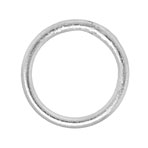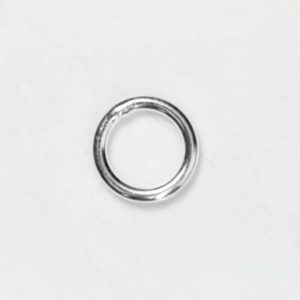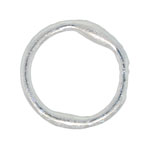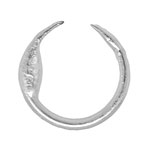Soldering vs. Fusing
What is the difference between soldering and fusing? What are the benefits of each technique and what are the difficulties? What tools and equipment are needed for each technique? These are just some of the questions we get asked frequently at Workingsilver.
Here are the answers.
What is soldering?
In terms of jewelry making, soldering is joining two pieces of metal with another metal alloy called solder by using heat (a torch) and flux. A small piece of solder is placed on the join and heated to its flow point which when cooled results in a strong bond between the pieces. Many metals used in jewelry making can be soldered, including sterling silver, fine silver, brass, copper, gold, and gold filled.
Fusing on the other hand can only be accomplished with pure metals like fine silver (99.9% pure) and 24K gold, or certain ‘tarnish resistant’ silver alloys such as True Silver, Sterlium Plus or Argentium. Fusing is achieved, without the use of solder, by heating two pieces of metal that are touching to their melting point, resulting in the two pieces joining (fusing) into one piece.
Because fusing uses metals which do not oxidize during the heating process, it is possible to accomplish this technique with fewer tools and supplies than are needed for soldering. Most notable is eliminating the use of flux and solder, and the need to clean the oxidation using pickle (a mild acid solution).
Fusing, when done carefully results in a clean joint with little need for further filing or removal of excess metal. If however a piece is heated slightly too much, the metal will tend to clump and create a very organic result (not always a negative result, but it can be hard to control)

(Image 1) a properly fused ring
(Image 2) Some problems that may happen with fusing. The first ring was heated too much, the second didn’t have a tight enough join.
Soldering creates a bond that, while not as strong as a fused joint, when cleaned and finished properly, is virtually invisible.
(Image 3) A well soldered ring
Using pure metals in jewelry has some pros and cons as well. Pure silver will never tarnish like sterling silver will, but because it contains no copper or other metal to make it a harder alloy, it is incredibly soft and not suitable for some jewelry applications. Rings and bangles made using fine silver may bend and become mis-shaped, whereas making chain links or bezels using the same material can have some wonderful results. Because fine silver is so soft and malleable, creating textured links and components is fun and easy.
If you are curious and itching to start creating some lovely jewelry components or handmade chain, but not sure about diving in fully and investing in a full soldering station set up, then trying your hand at fusing is a great place to start. The basic tools you will need for successful fusing are:
A torch – a micro butane torch is plenty hot enough to fuse up to 14 gauge fine silver on a charcoal block as long as the piece is not too large.
A soldering surface – charcoal is recommended as is helps retain heat, or a fire brick
Fine silver
tools to achieve a good join to be fused; pliers, cutter, file
Whichever technique you choose, have fun and be creative…and always be safe!


